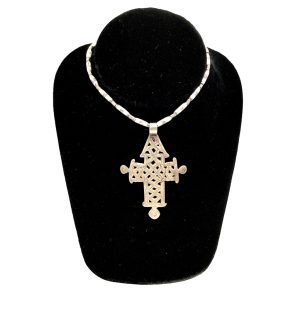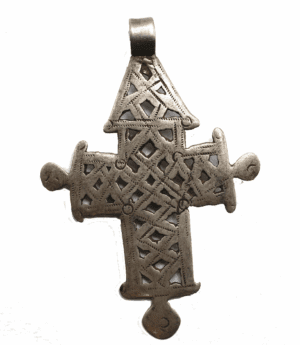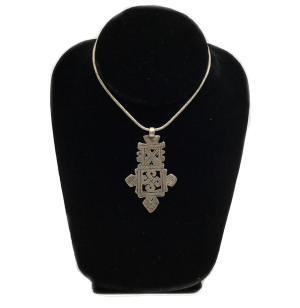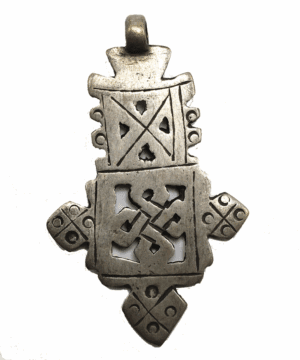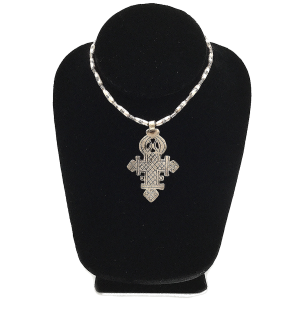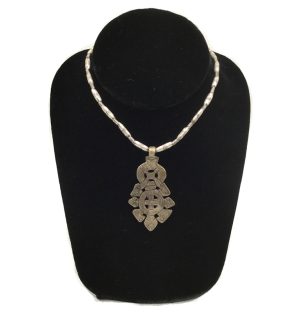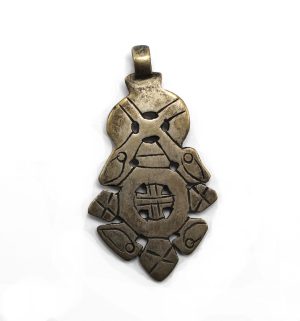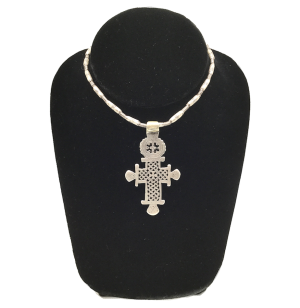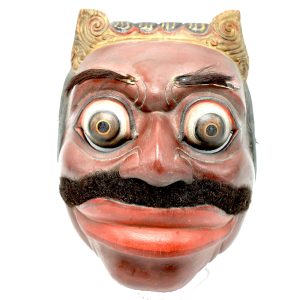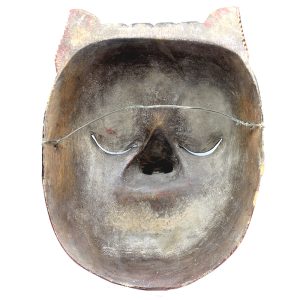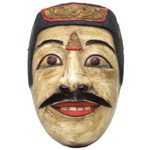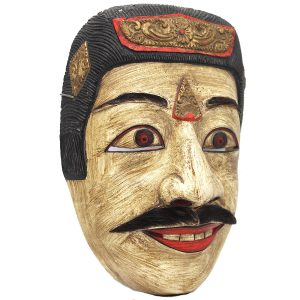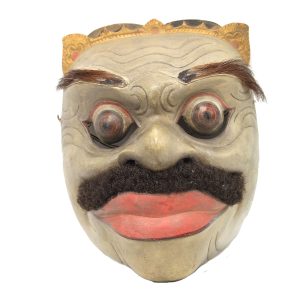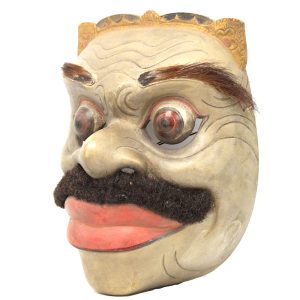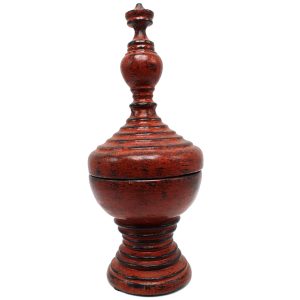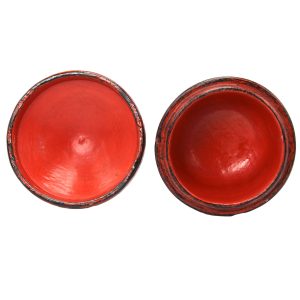Showing 229–240 of 248 results
-
Sale!


$125.00 Original price was: $125.00.$105.00Current price is: $105.00.
Ht: 3″ W: 2.62″ | FREE SHIPPING WITHIN CONTINENTAL U.S.
Pendant cross with pierced “endless knot.” Use of “positive and negative space” highlights dualities: materiality/immateriality; body/soul’s nourishment; spiritual/physical salvation; union of humanity and Christ’s divinity..
-
Sale!


$135.00 Original price was: $135.00.$115.00Current price is: $115.00.
H: 2.375″ W:1.25 ” | FREE SHIPPING WITHIN CONTINENTAL U.S.
The 4 birds on this vintage cross transform it into the Tree of Life, the True Cross, beginning and end of time, and link Ethiopian lineage to biblical Queen of Sheba. Circles represent God’s love, and are apotropaic symbols to bring blessings and repel evil.
-
Sale!


$125.00 Original price was: $125.00.$105.00Current price is: $105.00.
Ht: 2.44″ W: 1.56″ | FREE SHIPPING WITHIN CONTINENTAL U.S.
Axum cross has a square with a stylized “endless knot” with pierced cutouts that entraps evil spirits for eternity and etched “protective eyes” circles to deflect misfortune. Stylized rectangles on arms represent the Ark of the Covenant.
-
Sale!


$125.00 Original price was: $125.00.$105.00Current price is: $105.00.
Ht: 2.44″ W: 1.56″ | FREE SHIPPING WITHIN CONTINENTAL U.S.
Axum cross pendant, 3 arms with 4 circles symbole 12 Apostles; circles are “protective eyes” to deflect the “evil eye;” cross hatches are never-ending-knot to entrap malevolent forces; rectangles represent Ark of the Covenant.
-
Sale!


$135.00 Original price was: $135.00.$115.00Current price is: $115.00.
Ht: 2.375″ W: 1.625″ | FREE SHIPPING WITHIN CONTINENTAL U.S.
Cross pendant with a circle with pierced design on top and circle image below surrounding a Latin cross. The 4 birds transform the Cross into the Tree of Life and also symbolize the Holy ghost. A group of four doves represents peace.
-
Sale!


$125.00 Original price was: $125.00.$105.00Current price is: $105.00.
Ht: 2.5″ W: 1.325″ | FREE SHIPPING WITHIN CONTINENTAL U.S.
Centered with a stylized Cross Pattée, this Axum vintage coin silver pendant has a circular top symbolizing Christ’s halo, divinity and resurrection; arms with etched matrix represent the “never-ending-knot,” and stylized rectangles represent the Arc of the Covenant.
-
Sale!


$125.00 Original price was: $125.00.$105.00Current price is: $105.00.
H: 2.625” W: 1.75″ | FREE SHIPPING WITHIN CONTINENTAL U.S.
Lyrical pendant with three-sided elaborate extensions, and etched circles symbolizing God’s everlasting love. “Protective eye” symbols bring blessings and repel evil and avert the “evil eye.”
-


$1,050.00
Javanese Wayang (puppet theater) Topeng (literally “pressed against the face” or mask) is a very refined dance form accompanied by gamelan music. In Bali Topeng tua is the charming dance of an old courtier’s fragile movements, his lack of control and his gathering energy for a short lively dance. He sits behind a cloth curtain,…
-


$125.00
This ethnic and folk-art Bali legendary court minister (topeng patih) is performed in a special mask dance named Topeng Panjegan, as only one dancer interprets five different characters wearing full face masks preventing speech. Patih manis (Sweet Minister) is often the first solo dance after a gamelan orchestra introduction, and this patih keras (strong minister)…
-


$105.00
All ethnic mask (topeng) dances in Bali are accompanied with music from a gamelan percussion orchestra as are dramas and other entertainments considered as offerings to honor, please and attract the favor of the gods and ancestral spirits. In the west dancers put on masks to pretend they are someone else. Balinese dancers become the…
-


$125.00
Court ministers (patih) in Bali, Indonesia are danced in mask (topeng) performances named Topeng Panjegan where a single dancer interprets 5 legendary characters wearing full face masks, cannot speak and much portray them only through gestures and body language and positions. Patih manis (literally sweet, a good natured, diplomatic minister) is often the first solo…
-
Sale!


$185.00 Original price was: $185.00.$160.00Current price is: $160.00.
H: 10.5” Dia: 4.25″ | FREE SHIPPING WITHIN CONTINENTAL U.S.
Vintage miniature lacquer and bamboo hsun ok used on a home altar for offerings to the Buddha statue there with circular tiers repeated on the foot and the stupa finial top.
End of content
End of content

